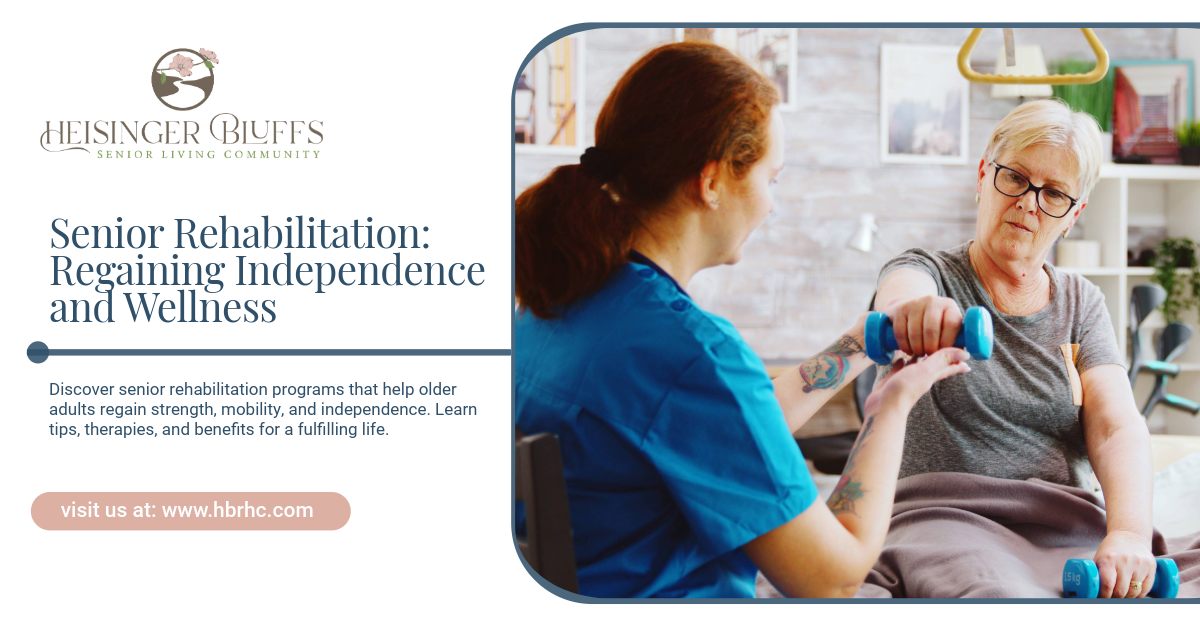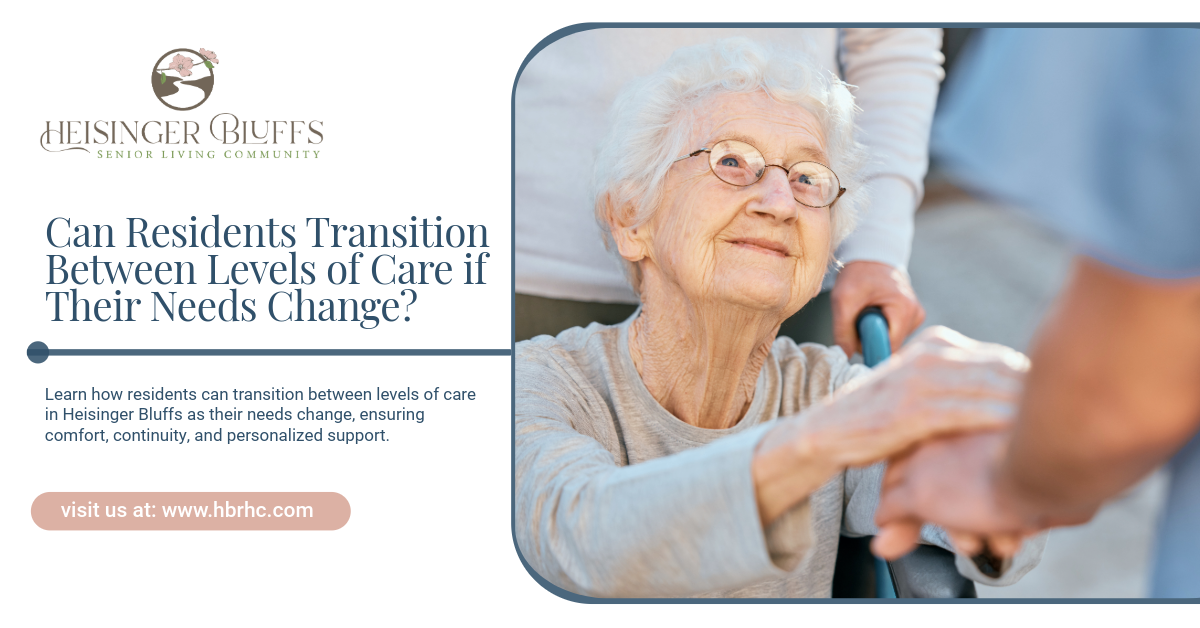Senior Rehabilitation: Regaining Independence and Wellness

Key Highlights
- Senior rehabilitation focuses on restoring independence and improving quality of life after illness, injury, or surgery.
- Personalized care plans include physical, occupational, and speech therapies tailored to each individual’s needs.
- Early intervention and consistent therapy improve recovery outcomes and reduce the risk of future injuries.
- Emotional support and social engagement play a critical role in holistic rehabilitation.
- Nutrition, exercise, and home safety modifications complement rehabilitation programs.
A sudden illness, injury, or major surgery can be life-changing, especially for older adults. Daily routines, mobility, and independence may be temporarily or permanently affected. Senior rehabilitation is designed to help older adults regain physical, cognitive, and emotional strength so they can return to the activities they enjoy and maintain their independence.
Whether recovering from a hip replacement, stroke, or a debilitating illness, the goal of senior rehabilitation is not just to restore function but to empower individuals to live fulfilling lives.
What is Senior Rehabilitation?
Senior rehabilitation is a specialized approach to healthcare that focuses on restoring physical, mental, and emotional abilities in older adults. Unlike general medical care, rehabilitation is goal-oriented, aiming to help seniors regain independence and confidence.
Key components include:
- Physical Therapy (PT): Improves mobility, strength, balance, and coordination.
- Occupational Therapy (OT): Focuses on performing daily tasks such as dressing, cooking, and bathing safely.
- Speech Therapy: Assists with communication, swallowing difficulties, and cognitive retraining.
- Emotional Support & Counseling: Helps seniors cope with the emotional challenges of recovery.
Why Senior Rehabilitation is Important
Aging naturally comes with challenges such as decreased muscle mass, slower recovery times, and increased risk of falls. Rehabilitation helps seniors overcome these challenges by:
- Restoring Independence: Seniors can resume daily activities without constant assistance.
- Reducing Risk of Complications: Proper therapy reduces the chance of re-injury, falls, and hospital readmissions.
- Improving Quality of Life: Seniors regain confidence and can participate in hobbies and social activities.
- Enhancing Emotional Well-being: Therapy provides structure, social interaction, and a sense of accomplishment.
Common Scenarios That Require Rehabilitation
Many seniors benefit from rehabilitation after experiencing:
| Condition/Injury | Rehabilitation Focus | Goal |
|---|---|---|
| Hip or knee replacement | Strengthening muscles, improving mobility | Walk independently, resume daily activities |
| Stroke | Physical, occupational, and speech therapy | Restore movement, speech, and cognitive skills |
| Heart attack | Cardiac rehabilitation, exercise, lifestyle education | Improve cardiovascular health and stamina |
| Fractures | PT and OT to restore strength and flexibility | Prevent future falls, regain independence |
| Chronic illnesses | Pain management, mobility exercises | Enhance comfort and quality of life |
| Neurological conditions | Balance, coordination, and cognitive therapies | Maximize independence and daily functioning |
Personalized Rehabilitation Plans
A successful senior rehabilitation program is tailored to each individual. Healthcare professionals assess:
- Medical history and current health conditions
- Mobility and functional abilities
- Cognitive function and emotional well-being
- Personal goals and desired activities
From there, therapists create a personalized care plan, which may include:
- Strength and balance exercises
- Training in adaptive techniques for daily living
- Cognitive stimulation activities
- Nutritional guidance to support healing and energy
The Role of Physical Therapy in Senior Rehabilitation
Physical therapy is a cornerstone of rehabilitation. Seniors often face muscle weakness, joint stiffness, and balance issues. PT helps by:
- Rebuilding strength and flexibility
- Improving walking and mobility
- Reducing pain and stiffness
- Preventing falls through balance and coordination training
A therapist may use exercises, resistance training, and assistive devices such as walkers or canes to ensure safe progress.
Occupational Therapy: Regaining Daily Independence
Occupational therapy focuses on helping seniors perform daily living activities safely and independently. OT may involve:
- Learning adaptive techniques for bathing, dressing, and cooking
- Modifying home environments to reduce fall risk
- Using assistive tools like grab bars, shower chairs, or special utensils
By combining physical improvements with practical adaptations, seniors can regain confidence and autonomy.
Speech and Cognitive Therapies
For seniors recovering from stroke or neurological conditions, speech and cognitive therapies are essential. These therapies help with:
- Speech and language recovery
- Swallowing difficulties
- Memory, problem-solving, and attention skills
Cognitive exercises and structured routines improve mental agility and independence.
Emotional and Social Support
Recovery isn’t just physical. Emotional and social well-being is critical to success. Seniors may experience frustration, depression, or anxiety during rehabilitation. Programs that include counseling, group therapy, and social activities can:
- Boost motivation and morale
- Reduce feelings of isolation
- Encourage adherence to therapy routines
Family involvement also strengthens support and fosters a positive recovery environment.
Nutrition’s Role in Rehabilitation
A well-balanced diet is essential for recovery. Proper nutrition supports:
- Muscle repair and bone health
- Immune system function
- Energy levels for therapy and daily activities
A diet rich in protein, vitamins, minerals, and hydration accelerates healing and promotes long-term wellness.
Home Safety and Modifications
Returning home after rehabilitation may require safety adjustments:
- Installing grab bars and handrails
- Using non-slip mats in bathrooms
- Ensuring walkways are clear and well-lit
- Adjusting furniture for mobility devices
These modifications prevent falls and support a smooth transition back to independent living.
Benefits of Early Intervention
The sooner rehabilitation begins after an illness or injury, the better the outcomes will be. Early intervention can:
- Speed up recovery time
- Reduce long-term complications
- Minimize muscle atrophy and joint stiffness
- Improve overall confidence and emotional health
Healthcare providers encourage starting rehabilitation as soon as medically safe to maximize benefits.
Long-Term Maintenance and Wellness
Recovery doesn’t end when formal rehabilitation concludes. Long-term maintenance includes:
- Regular exercise routines
- Continued therapy or booster sessions as needed
- Social engagement and recreational activities
- Healthy nutrition and hydration habits
- Periodic assessments to adjust plans as abilities change
By maintaining these practices, seniors can continue enjoying a high quality of life and independence.
Final Thoughts
Senior rehabilitation is about more than regaining strength—it’s about reclaiming independence, confidence, and quality of life. A comprehensive rehabilitation program addresses physical, cognitive, emotional, and social needs to help seniors return to the life they love.
At Heisinger Bluffs, our assisted living, memory care, and senior respite programs include specialized rehabilitation services designed to support older adults through every stage of recovery, ensuring they regain their independence safely and confidently. Contact us today!
Frequently Asked Questions
How long does senior rehabilitation take?
The duration varies depending on the individual’s condition, age, and goals. Programs can range from a few weeks to several months, with ongoing maintenance as needed.
Is rehabilitation only for seniors recovering from surgery?
No. Rehabilitation can help seniors recover from illness, chronic conditions, neurological events, injuries, and even age-related mobility challenges.
Can rehabilitation be done at home?
Yes. Home-based rehabilitation programs are available and can be just as effective when supervised by licensed therapists and paired with proper equipment and support.
What types of specialists are involved in senior rehabilitation?
Programs may involve physical therapists, occupational therapists, speech-language pathologists, nutritionists, and mental health counselors.
Will insurance cover senior rehabilitation?
Many insurance plans cover rehabilitation services, but coverage depends on the plan, medical necessity, and type of therapy. It’s best to check with your provider.
Sources:
- https://pubmed.ncbi.nlm.nih.gov/16627078/
- https://pmc.ncbi.nlm.nih.gov/articles/PMC10953191/
- https://pubs.asha.org/doi/10.1044/2021_PERSP-20-00295
- https://www.uclahealth.org/news/article/4-worthwhile-brain-games-older-adults-3
- https://www.who.int/news-room/fact-sheets/detail/mental-health-of-older-adults
- https://ahca.myflorida.com/medicaid/medicaid-policy-quality-and-operations/medicaid-policy-and-quality/medicaid-policy/medical-and-behavioral-health-coverage-policy/specialized-health-services/early-intervention-services











